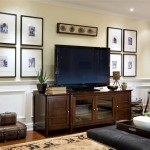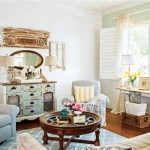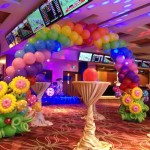DIY Wall Decor Ideas For Living Room Art
The living room often serves as the central hub of a home. It's a space for relaxation, entertainment, and connection with family and friends. As such, the aesthetics of the living room play a critical role in shaping the overall atmosphere and reflecting the homeowner's personality. Wall decor is a significant aspect of interior design, capable of dramatically transforming the ambiance of a room. Rather than relying solely on store-bought artwork, exploring do-it-yourself (DIY) wall decor options can offer a personalized and cost-effective approach to enhancing the living room's visual appeal. This article will explore various DIY wall decor ideas suitable for living rooms, focusing on creating unique and artistic expressions.
Repurposed Materials for Unique Wall Art
One cost-effective and environmentally conscious approach to DIY wall decor involves repurposing existing materials. This method not only reduces waste but also adds a unique and often rustic charm to the living room. Many everyday items can be transformed into eye-catching wall art. The key is to consider the material's texture, color, and potential for creative manipulation.
For instance, old wooden pallets, often discarded by businesses, can be disassembled and repurposed into a variety of wall decorations. The wood can be sanded, stained, or painted to create a backdrop for artwork, photographs, or even mounted plants. The uneven texture and weathered appearance of pallet wood can add a touch of rustic charm to a contemporary living room. Alternatively, the wooden slats can be arranged in geometric patterns or abstract designs to create a more modern aesthetic.
Another option involves using fabric scraps or leftover wallpaper. These materials can be arranged on canvas boards or within picture frames to create textured and visually interesting pieces. The use of different patterns, colors, and textures can add depth and dimension to the wall decor. Fabric can also be stretched over embroidery hoops to create a series of circular wall hangings. This method is particularly effective for showcasing vintage fabrics or creating a bohemian-inspired aesthetic.
Furthermore, consider repurposing metal objects. Old license plates, metal signs, or even repurposed tools can be arranged to create industrial-style wall art. The contrast between the cold metal and the warm tones of a living room can be visually striking. Metal objects can also be painted or decorated with stencils to add further personalization.
Glass bottles and jars, often discarded after use, can also be incorporated into wall decor. By painting the bottles or wrapping them with twine, and then mounting them on a wooden board, they can be transformed into unique vases for displaying flowers or greenery. This adds a touch of nature and freshness to the living room.
Creating Textured Wall Panels
Textured wall panels can add depth and visual interest to a living room, creating a focal point that draws the eye. Unlike traditional paintings or prints, textured panels provide a tactile experience and can play with light and shadow in dynamic ways. Several techniques can be employed to create these panels, ranging from simple applications of texture paste to more complex sculptural designs.
One popular method involves using texture paste or modeling paste, which can be applied to a canvas or wooden board using a palette knife or other tools. Different application techniques, such as stippling, swirling, or layering, can create a variety of textures. The paste can be left white or painted in various colors to match the room's decor. Consider using stencils to create repeating patterns or add intricate details to the textured surface.
Another option involves using natural materials like sand, pebbles, or dried flowers to create texture. These materials can be adhered to a surface using glue or a clear acrylic medium. The arrangement of these materials can be carefully planned to create a specific design or left to create a more organic and random appearance. For a coastal-themed living room, incorporating sand and seashells into a textured wall panel can be particularly effective.
For a more sculptural approach, consider using materials like plaster of Paris or concrete. These materials can be molded and shaped to create three-dimensional designs. The finished panels can be painted or left in their natural state to showcase the raw texture of the material. Creating molds from silicone or other flexible materials can allow for the replication of intricate designs.
Another approach to creating textured wall panels involves using wood. Wooden planks of varying thicknesses and lengths can be arranged on a backing board to create a dimensional effect. The wood can be left natural or stained in different colors to enhance the visual appeal. This type of wall decor can add a rustic or modern touch to the living room, depending on the type of wood used and the arrangement of the panels.
Personalized Photo Displays and Gallery Walls
Photographs are a powerful way to personalize a living room and showcase cherished memories. Rather than simply scattering framed photos around the room, creating a cohesive and visually appealing photo display or gallery wall can significantly enhance the aesthetic of the space. The key to a successful gallery wall is careful planning and consideration of factors such as frame styles, photo sizes, and overall layout.
Before starting, gather a collection of photographs that resonate with the homeowner's personal style and memories. Consider a mix of black and white and color photographs, as well as different sizes and orientations. Choose a theme or color palette to create a sense of unity throughout the display. For example, focusing on family portraits or travel photos can create a cohesive narrative.
Next, select frames that complement the photographs and the overall decor of the living room. Consider a mix of frame styles, such as classic wooden frames, sleek metal frames, or more ornate and decorative frames. The frames should also be chosen in colors that coordinate with the photographs and the surrounding walls. A balanced mix of frame sizes and styles can add visual interest to the gallery wall.
Before hammering any nails into the wall, it's helpful to create a mock-up of the gallery wall on the floor. This allows experimentation with different layouts and spacing arrangements. Consider using paper cutouts the same size as the frames to easily visualize the arrangement. Aim for a balanced and visually appealing layout, taking into account the size and shape of the wall. Consider using a central anchor point, such as a larger photograph or piece of artwork, and then arranging the other photos around it.
In addition to traditional framed photographs, consider incorporating other elements into the gallery wall, such as artwork, prints, or even small decorative objects. This can add depth and texture to the display and further personalize the space. For example, adding a small shelf with a plant or a piece of ceramic art can break up the monotony of the photographs and add visual interest.
Beyond traditional framing, numerous creative options exist for displaying photographs. For example, string lights can be used to hang photographs using clothespins. This creates a whimsical and informal display that is perfect for a casual living room. Another option is to create a photo collage on a large canvas or wooden board. This allows for a more free-form and artistic approach to displaying photographs.
Abstract Painting and Geometric Art
Creating abstract paintings or geometric art can be a rewarding and expressive way to add a personal touch to the living room. Abstract art often focuses on color, form, and texture, allowing for a wide range of creative possibilities. Geometric art, on the other hand, emphasizes precise shapes and patterns, creating a more structured and modern aesthetic. Both styles can be easily created at home with minimal materials and equipment.
For abstract painting, consider using acrylic paints, which are versatile, quick-drying, and readily available. Experiment with different techniques, such as pouring, splattering, or layering colors to create unique effects. Don't be afraid to experiment with different color combinations and brushstrokes. Abstract art is often about the process of creation rather than the final product, so allow oneself to be guided by intuition and emotion.
Another approach to abstract painting involves using mixed media. Incorporating materials like fabric scraps, paper, or even found objects into the painting can add texture and depth. These materials can be glued or adhered to the canvas and then painted over to create a cohesive and visually interesting piece.
For geometric art, consider using masking tape to create clean lines and precise shapes. The tape can be applied to a canvas or wooden board to create geometric patterns, and then the areas between the tape can be painted in different colors. Once the paint is dry, the tape can be removed to reveal sharp and defined lines. This technique allows for the creation of intricate and visually striking geometric designs.
Another option for creating geometric art involves using stencils. Stencils can be purchased or created at home using cardstock or plastic sheets. The stencils can be placed on a canvas and then painted over to create repeating patterns or intricate designs. This technique is particularly effective for creating symmetrical and balanced geometric compositions.
Color plays a crucial role in both abstract and geometric art. Consider the overall color scheme of the living room when selecting colors for the artwork. Choose colors that complement the existing decor and create a sense of harmony within the space. Alternatively, choose contrasting colors to create a bold and dramatic statement.
Framing the finished artwork can enhance its visual impact and protect it from damage. Consider using simple and minimalist frames that allow the artwork to take center stage. Alternatively, choose more ornate and decorative frames that complement the style of the artwork and the overall decor of the living room.

17 Best Diy Wall Decor Ideas In 2025 Art

26 Easy Diy Wall Décor For Your Living Room Home Decor On A Budget

How To Add Charm With Inexpensive Diy Wall Decor Open Doors Hearts

15 Diy Wall Decor Ideas For Any Room Cute And That S Simple To Make
:strip_icc()/102340212-480ff93eabdb4e96a3deaeb5b1d6a317.jpg?strip=all)
15 Diy Wall Art Projects For A High End Look On Budget

70 Crafty Living Room Wall Decor Ideas Craftionary

Diy Oversized Wall Art

6 Hyper Easy Wall Art Ideas For Your Living Room Gadac Diy Home Decorating

34 Diy Wall Art Ideas Homemade Painting Projects

26 Easy Diy Wall Décor For Your Living Room Joyful Derivatives
Related Posts







